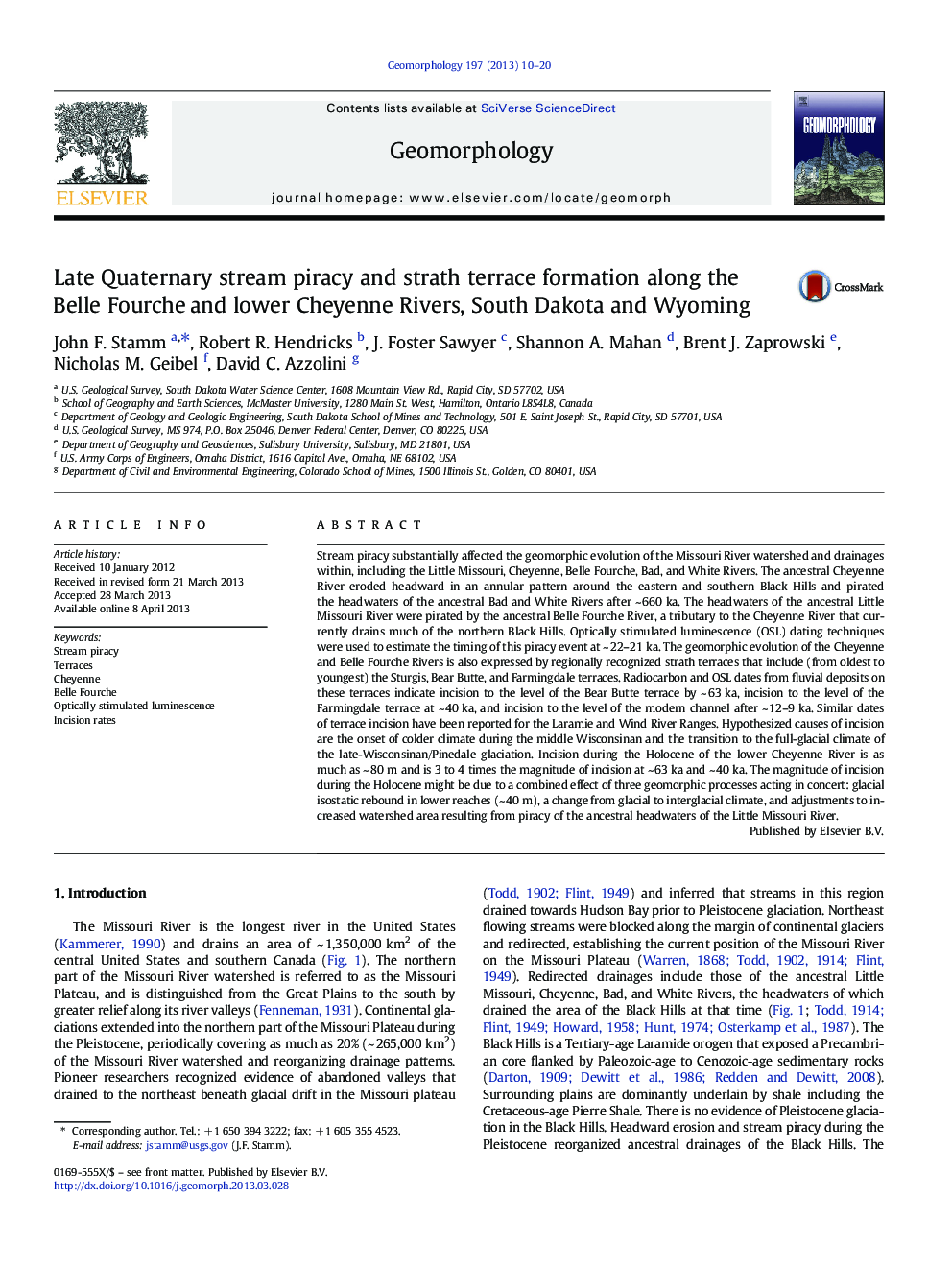| کد مقاله | کد نشریه | سال انتشار | مقاله انگلیسی | نسخه تمام متن |
|---|---|---|---|---|
| 4684759 | 1635452 | 2013 | 11 صفحه PDF | دانلود رایگان |

• OSL ages indicate the Bear Butte terrace was active from 63 ka to 40 ka.
• Ages indicate the Farmingdale terrace was active from 37 ka to 13 ka.
• Pleistocene incision associated with transition to glacial and full-glacial climate.
• Piracy of the headwaters of the Little Missouri River occurred at 22–21 ka.
• Piracy, isostacy, and climate change caused up to 80 m of Holocene incision.
Stream piracy substantially affected the geomorphic evolution of the Missouri River watershed and drainages within, including the Little Missouri, Cheyenne, Belle Fourche, Bad, and White Rivers. The ancestral Cheyenne River eroded headward in an annular pattern around the eastern and southern Black Hills and pirated the headwaters of the ancestral Bad and White Rivers after ~ 660 ka. The headwaters of the ancestral Little Missouri River were pirated by the ancestral Belle Fourche River, a tributary to the Cheyenne River that currently drains much of the northern Black Hills. Optically stimulated luminescence (OSL) dating techniques were used to estimate the timing of this piracy event at ~ 22–21 ka. The geomorphic evolution of the Cheyenne and Belle Fourche Rivers is also expressed by regionally recognized strath terraces that include (from oldest to youngest) the Sturgis, Bear Butte, and Farmingdale terraces. Radiocarbon and OSL dates from fluvial deposits on these terraces indicate incision to the level of the Bear Butte terrace by ~ 63 ka, incision to the level of the Farmingdale terrace at ~ 40 ka, and incision to the level of the modern channel after ~ 12–9 ka. Similar dates of terrace incision have been reported for the Laramie and Wind River Ranges. Hypothesized causes of incision are the onset of colder climate during the middle Wisconsinan and the transition to the full-glacial climate of the late-Wisconsinan/Pinedale glaciation. Incision during the Holocene of the lower Cheyenne River is as much as ~ 80 m and is 3 to 4 times the magnitude of incision at ~ 63 ka and ~ 40 ka. The magnitude of incision during the Holocene might be due to a combined effect of three geomorphic processes acting in concert: glacial isostatic rebound in lower reaches (~ 40 m), a change from glacial to interglacial climate, and adjustments to increased watershed area resulting from piracy of the ancestral headwaters of the Little Missouri River.
Journal: Geomorphology - Volume 197, 1 September 2013, Pages 10–20